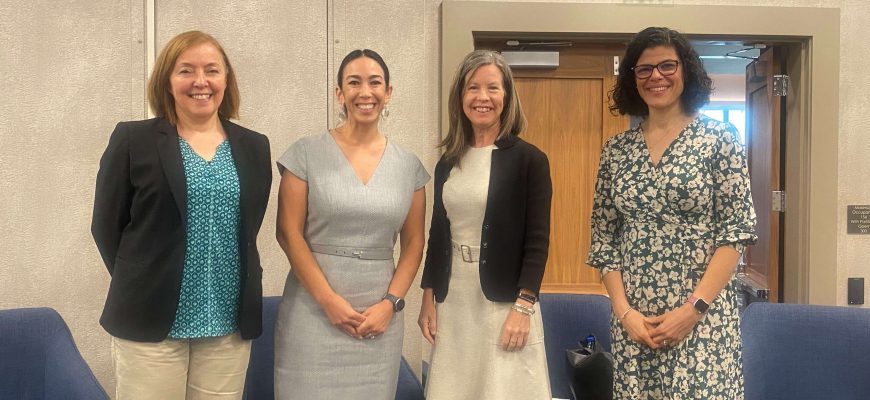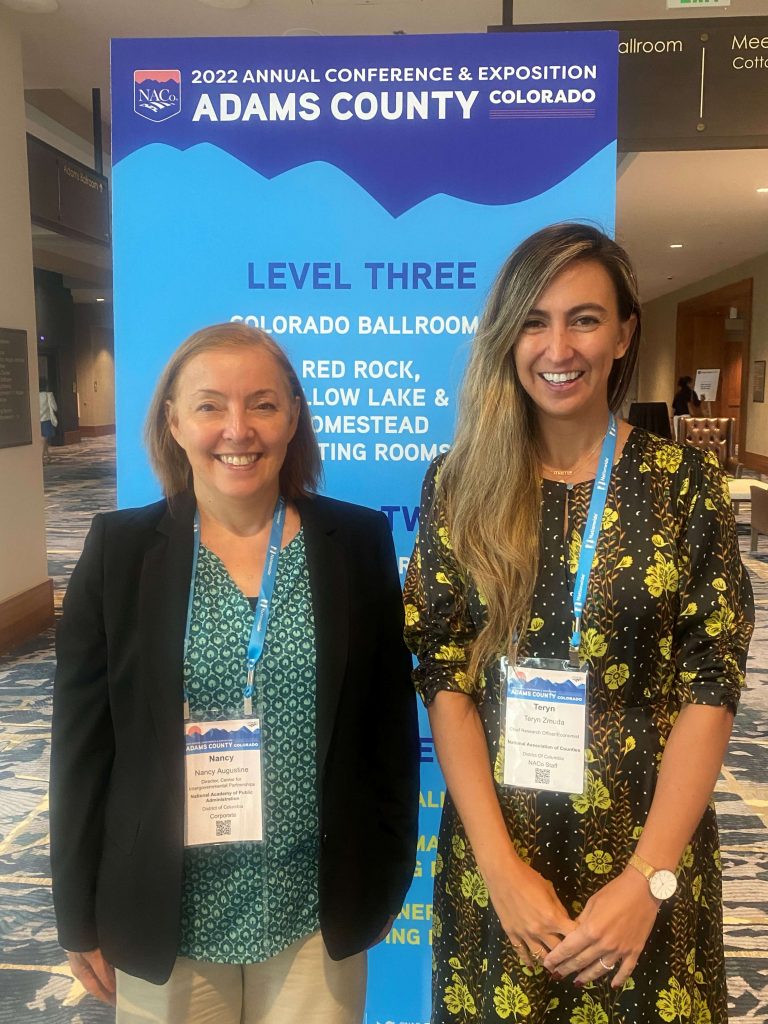
A Recap of The Center’s Trip to Adams County, CO
During a hot week in July, Colorado, the Center for Intergovernmental Partnerships (the Center) was a guest of the National Association of Counties (NACo) at their Annual Conference held in Adams County, Colorado. County officials, federal agency representatives, corporate sponsors, and partners from around the nation joined to discuss ongoing issues, triumphs, and struggles.
Discussions covered the relevance of DEI in county government, planning for increasingly common wildfires, the implications of housing affordability, and workforce development strategies, among many other issues. Attendees shared their experiences, exchanged solutions, discovered innovations, and enjoyed the hospitality and support of NACo. The event reminded rural and dense urban counties that, despite their differences, they all must navigate similar circumstances to serve their citizens adequately.
Some of the learning opportunities focused on the intergovernmental paradigm in which counties operate. The Center’s Director, Nancy Augustine, moderated a discussion on Fostering Effective Intergovernmental Partnerships to Maximize Outcomes (Sat. July 23 at 10:30 AM). She led a panel consisting of:
- Jen Tolentino – Director, Local Practice, Results for America (RFA)
- Amy Bason – Deputy Director and General Counsel, North Carolina Association of County Commissioners
- Hon. Denise Driehaus – Commissioner, Hamilton County, Ohio
Tolentino highlighted effective strategies for intergovernmental collaboration. The “7 Essential Elements” towards establishing and sustaining collaboration are:
- Shared commitment and goal(s)
- Trust and open communication
- Strong champions and leaders – elected officials must be among these leaders
- Dedicated staff time
- Dedicated funding and material resources
- Clear processes and accountability structures
- Strong data systems
Bason and Driehaus discussed moments when counties’ successes depended upon partnerships with other counties, municipalities, the state, or private partners. Bason talked about how North Carolina counties and the state government came together to work on the opioid crisis, recognizing that it was a shared problem they could tackle more effectively together. Driehaus gave examples of Hamilton County’s collaboration with Cincinnati and many other municipalities within its borders to distribute and use pandemic relief funds. They agreed that these seven elements were critical to developing and maintaining any successful partnership. They advised their audience not to wait for the next crisis or project but to start building relationships now with neighboring governments, community stakeholders, and business/nonprofit leaders.
The NACo Annual Conference allows counties to express their differing opinions and examine various problems. Despite their differences, many agree their future success depends on collaboration and relationships. Fostering new or improved connections with municipalities, states, territories, tribes, federal agencies, and private entities can lead to more significant accomplishments and problem-solving.

The Academy and its Center are grateful for the continued partnership and support of NACo and look forward to future opportunities to engage with and support its members.
